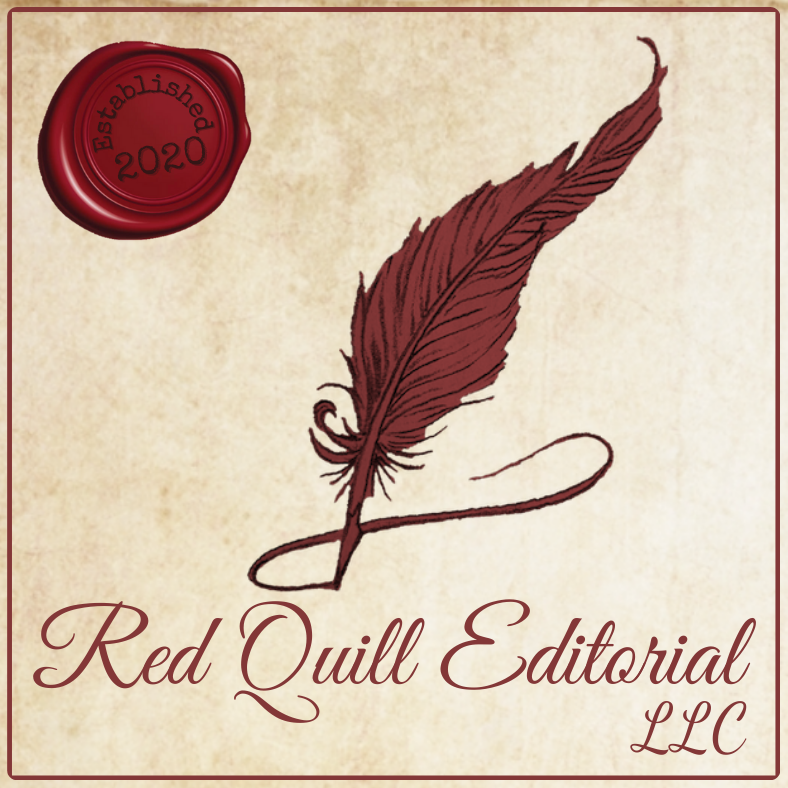
Introduction to Editing
Many authors are confused about the differences among the four rounds of editing and whether they actually need them all. Later in this article, I will cover each round of editing in depth, including what it involves and focuses on, as well as what to expect when your editor returns your manuscript to you. But first, I want to cover a few key points. (You can also find a summary of the rounds of editing toward the end of the article.)
(Check out my YouTube video titled What Type of Editing Does My Book Need?)
One Round at a Time
It actually and truly is impossible to focus on too many things at once. That is why there are so many rounds to the editing process—developmental editing, line editing, copyediting, and proofreading. Each round plays a very important role in perfecting your manuscript, and each round has a different focus from the next.
A professional editor recognizes the need to focus on a small window at a time in order to polish your manuscript into the diamond we know is there. You should never hire an editor who claims to be able to do it all at the same time or who provides the vague concept of “editing” your book without explaining exactly what type of editing they will be doing.
Order Is Important
The order is also very important. Skipping a step or performing any of them out of order can wind up costing you more money in the long run, whether from needing to repeat a round of edits or loss of sales from an unpolished book.
For example, cleaning up the grammatical errors before rounding out a character’s development or adding in more dialogue will introduce new errors and require another round of editing. Save yourself the headache and do it in the right order the first time.
Should You Hire Different Editors for Each Round of Editing?
At Red Quill Editorial, I love working with an author on both developmental editing and line/copyediting because it enhances my ability to see their ultimate vision for their book and help them attain that goal as their writing coach. It’s truly thrilling to see how their post-developmental rewrites turn out and help polish them up with the ideal rhythm while keeping true to the author’s voice, and I often form friendships with my clients through the journey.
However, I would highly recommend getting a fresh set of eyes for the final round of proofreading. For the same reason you hire an editor in the first place, the more times your editor touches your manuscript, the easier it is to overlook minor grammatical, spelling, and punctuation errors. By hiring a fresh editor for this part, you increase the error catch-rate. (Learn more about this in my article titled Copyediting vs Proofreading.)
Rewrites
Between each of the four rounds of editing, you should take as long as you need for your rewrites, to accept/reject suggested changes, to respond to your editor’s queries, and to ask your editor for clarification or assistance with a particular issue.

Developmental Editing
Developmental Editing focuses on the big picture of your manuscript and is often recommended for new authors to help refine their writing craft. As such, this should be the first round of professional editing that your book undergoes. I like to think of this round as a personalized one-on-one class that focuses on enhancing your writing craft. Through this process, you will learn how to develop and improve your manuscript while increasing your skill and understanding of the craft of writing.
Your developmental editor ensures that the story makes sense and the author addresses larger issues such as overall structure, timeline and order of content, hooks and prompts of each chapter, archetypes and character development, point of view, plot and tropes, time and location setting, proper pacing, consistency, transitions, dialogue, and adding/deleting/rearranging of scenes.
Deliverable: At the completion of the developmental edit, you will typically receive balloon comments directly on your manuscript as well as a detailed editorial letter with applicable notes and suggestions for improving your manuscript and your writing craft in general.

Line Editing
Line editing focuses on the rhythm and language of your manuscript, working on voice and word choice, style and phrasing, dialogue and dialogue tags/anchors/said bookisms, similar sentence structure and repetition, filler words, and consistency with action. It also searches for that perfect balance between variation and overly purple prose. Your line editor should be able to make the necessary changes while maintaining your unique authorial voice.
Deliverable: At the completion of the line edit, you will typically receive balloon comments and in-line edits directly on your manuscript. Your editor should be using some form of tracking for this so you can accept/reject any of the suggested changes at your discretion. At Red Quill Editorial, I use Word’s Track Changes tool for this purpose.

Copyediting
This is what most authors think of when they think of professional editing. Copyediting is the first attack on all of those pesky errors and gets you prepared for the homestretch of your publishing journey. It checks for typos, double words, grammatical errors, punctuation, spelling, formatting issues, echo words, completes fact-checking, and ensures an accurate timeline. (Note that this is only the first attack on such issues and I highly recommend following up with a fresh set of eyes for a final proofreading as your fourth and final round of editing.)
Deliverable: At the completion of the copyedit, you will typically receive a marked-up manuscript with in-line edits. Your editor should be using some form of tracking for this so you can accept/reject any of the suggested changes at your discretion. At Red Quill Editorial, I use Word’s Track Changes tool for this purpose.
Editor’s Note on Line Editing & Copyediting
Instead of two separate rounds, this is the one instance where you could potentially hire an editor to do two rounds of editing at the same time, saving time and potentially money as well.
The reason this is the exception to the rule is because line editors often find it difficult to overlook the grammatical, spelling, and punctuation errors that should be handled during a copyedit because these can affect the cadence of the narrative, which is the focus of the line edit. But you don’t want to reverse order and have the copyedit done first either because new errors could be introduced during the line edit.
This is why many editors, including myself, combine these two rounds into a Line/Copyediting package deal.

Proofreading
Editor’s Note: At Red Quill Editorial, I no longer offer proofreading because I want to focus on the types of editing I most enjoy and thrive in, but I am happy to refer my clients to my proofreading colleagues.
Proofreading should be your final step prior to publication. This round is often done on the formatted version (or proof copy, hence the name) because formatting can potentially introduce new errors—especially if you wind up doing some last-minute changes or additions (I’m guilty of this with my own book Horse Cents!).
Similar to copyediting, proofreading also checks for typos, double words, grammatical errors, punctuation, spelling, formatting issues, and echo words. Doing this final round after a copyedit reduces the amount of errors that will remain in your final published book. (Learn more about this in my article titled Copyediting vs Proofreading.)
Deliverable: At the completion of the proofreading, you will typically receive in-line edits directly on your manuscript. Your editor should be using some form of tracking for this so you can accept/reject any of the suggested changes at your discretion.
The Four Rounds of Editing, Summarized

Round 1: Developmental Editing
big-picture view; focused on overall structure, timeline & order of content, hooks & prompts, archetypes & character development, point of view, plot & tropes, setting, pacing, consistency, transitions, dialogue

Editor’s Note: Line editing and copyediting are often combined into a single round.
Round 2: Line Editing
line by line; smoothing & enhancing the rhythm & language of your manuscript, working on voice & word choice, style & phrasing, dialogue, repetition, filler words, & consistency
Round 3: Copyediting
line by line; this is what most people think of when they think of editing; corrects typos, echo words, grammar, punctuation, spelling, & formatting issues, completes fact-checking, & ensures an accurate timeline

Round 4: Proofreading
the final set of sharp eyes prior to publication to catch & correct any lingering or newly introduced grammar, spelling, or punctuation errors
So, What Does My Manuscript Need?
Every author is different and every manuscript is unique, but even if you plan to query agents for traditional publishing where they will take care of the grammar, you’d still benefit from a Developmental Edit to get your manuscript into the best shape possible to impress your agent.
Planning to self-publish? What you need when it comes to editing really depends on your writing capabilities, the current state of your manuscript, and your goals for your book. For new authors, I highly recommend getting all four rounds of editing if you can swing it. At Red Quill Editorial, I recognize that many indie authors are on a tight budget, and that’s why I offer a Payment Plan option so you don’t have to sacrifice the quality editing your book deserves.
Remember, order is important when it comes to editing, so don’t skip around or be overeager. As the old proverb goes, “an ounce of prevention is worth a pound of cure.”
For more information on the four rounds of editing, check out The Editing Podcast‘s first ever episode called The Different Levels of Editing, hosted by two editors for fellow editors and authors alike!
Need help figuring out exactly what your manuscript needs? Let’s Discuss Your Manuscript!
Red Quill Editorial LLC

Think you might be ready for an editor? If you’re unsure what type of editing you need, want to know how much it might cost, or simply have a question for me, Let’s Discuss Your Manuscript! I offer discounts, a payment plan option, and value adds.


